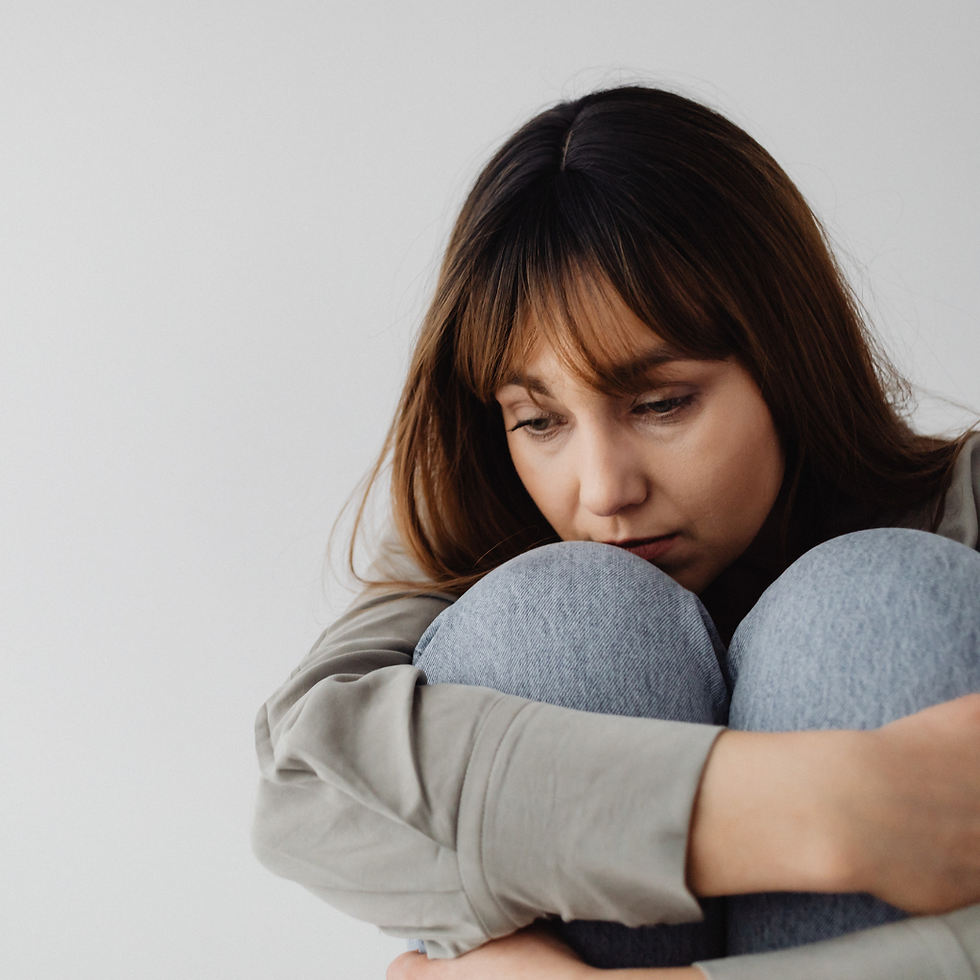Anxiety Setbacks: What They Really Mean and How to Move Through Them
- Shannon Jackson

- Jan 1, 2022
- 3 min read
Updated: Mar 27
Are you constantly wondering if you’ve had a setback in your anxiety recovery? Or maybe you're afraid of experiencing one at all? If so, you're not alone.
In this episode, I sat down with Drew Linsalata, author and host of The Anxious Truth podcast. Drew has lived experience with anxiety, panic disorder, agoraphobia, and depression, and he’s been fully recovered for over a decade. Today, he helps thousands of people navigate the ups and downs of recovery—including the dreaded “setback.”
Whether you're asking:
What is an anxiety setback?
Am I having a relapse?
How do I recover from a setback?
Can I prevent setbacks during recovery?
This post has the answers.
What Is an Anxiety Setback?

What Is an Anxiety Setback?
Let’s start with what a setback isn’t. As Drew says, “A setback has nothing to do with how you feel—it’s about how you respond to how you feel.”
An anxiety setback isn’t about experiencing panic or symptoms. It’s about falling back into unhelpful patterns—like avoidance, fear-based thinking, or old reactions to anxiety. In other words, it’s when you start responding in ways that no longer serve your healing.
Am I Feeling More? That Doesn’t Mean It’s a Setback
One of the most common anxiety recovery myths is that feeling more anxiety or panic means you’re going backward. But in reality, feeling more often means you’re moving forward.
You're challenging fear, facing discomfort, and building new neural pathways. So yes, you may feel more—but that’s a good thing. The anxious feelings don’t mean failure. They mean progress. A dip in emotional tolerance doesn’t equal regression. It just means you’re doing the work.
What Can Trigger an Anxiety Setback?
Here are some common triggers Drew and I talked about:
Unrealistic expectations (like, “I shouldn’t feel anxious anymore”)
Stress and life changes
Poor sleep and self-care
Avoidance behaviors (resisting discomfort or skipping exposures)
Self-criticism
Avoidance feels comforting in the short term—but it reinforces fear and keeps you stuck. The key to panic disorder recovery is choosing long-term healing over temporary relief.
Facing Fear: How Drew Pushed Through Setbacks
Drew hit a turning point when he told himself, “If you’re going to kill me, kill me—but I’m not doing it this way anymore.” He was tired of letting fear control his life.
Instead of giving in to fear, he leaned on his experience. He’d survived panic before—and he reminded himself of that truth. This mindset shift helped him challenge fear, tolerate discomfort, and make a different choice.
How to Handle a Setback (or a Tough Day)
Here’s what Drew suggests when you feel like you’ve had a setback:
Don’t panic about panicking.
See the moment as a chance to use your new skills.
Ask: “How do I want to handle this?”
Then take action—any small, healthy action will do.
Whether you want to retry something right away or wait a day, both are okay. The most important thing is to keep showing up and not let fear decide your next move.
Afraid of Having a Setback?
It's normal to fear setbacks—especially in early recovery. But just because recovery feels fragile doesn't mean it is. Every time you face fear, you build resilience. The more you do, the more confidence you gain.
Avoid acting on the fear of setbacks. Let the fear be there, and still move forward. Recovery is stronger than it feels.
Final Truths From Drew & Me
🧠 Drew: “I know it seems unthinkable to go directly at this thing, but I promise—that really is the way.”
💛 Me (Shannon): “Just because you can’t imagine that recovery is possible doesn’t mean it isn’t.”
Key Takeaways
A setback is about how you respond, not how you feel.
Feeling more doesn’t mean you’re failing—it means you’re healing.
Avoidance feeds fear; action fuels recovery.
You can face discomfort and come out stronger.
Recovery isn’t fragile—it’s being built every time you choose courage.
If you’re navigating panic disorder, agoraphobia, or general anxiety recovery, know this: You’re not alone, and every step forward (even the messy ones) counts.
WHERE TO FIND DREW
Books, podcast, all the things: www.theanxioustruth.com
On Instagram: @theanxioustruth
For all of the knowledge, tips, tools, and truths, make sure to listen to the full episode!
What's blocking your anxiety recovery? Take my free quiz and find out!
Check out my masterclasses here and start experiencing lots more peace, joy, & freedom!






